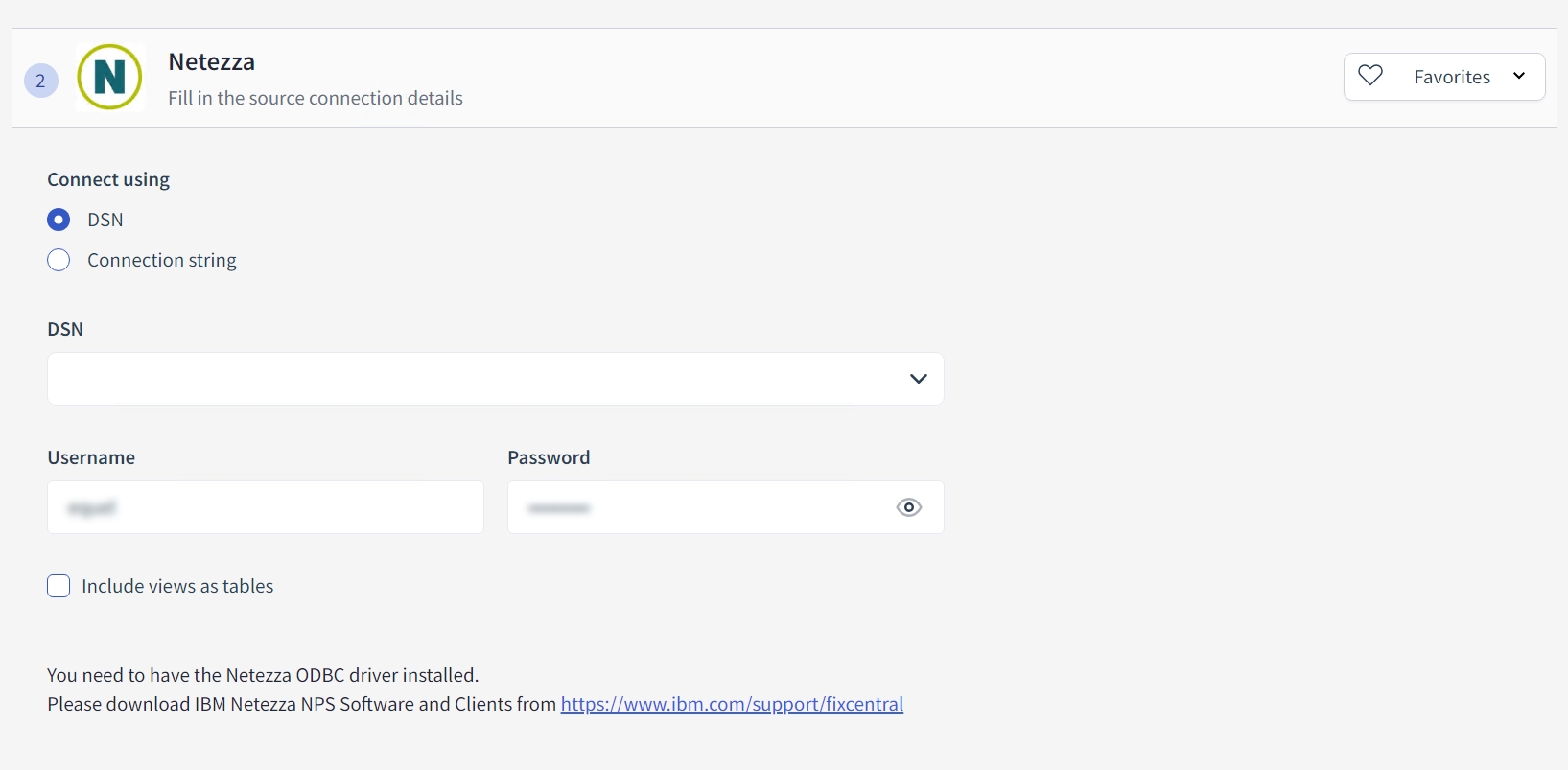Netezza

Connection Details
Connect using
DSN
Select this option if you have a pre-configured DSN for Databricks. DSNs are a convenient way to store connection information in a named location and can be easily managed within your operating system.
Connection string
Choose this if you prefer to directly enter a full connection string. This string includes all necessary details such as host, port, and credentials.
Username
Enter the username that has access rights to the Netezza database.
Password
Enter the password corresponding to the username provided.
Include views as tables
If you want to include views in the migration and treat them as tables, check this option. This can be useful for migrations where the view's data needs to be replicated along with the tables.
Last updated